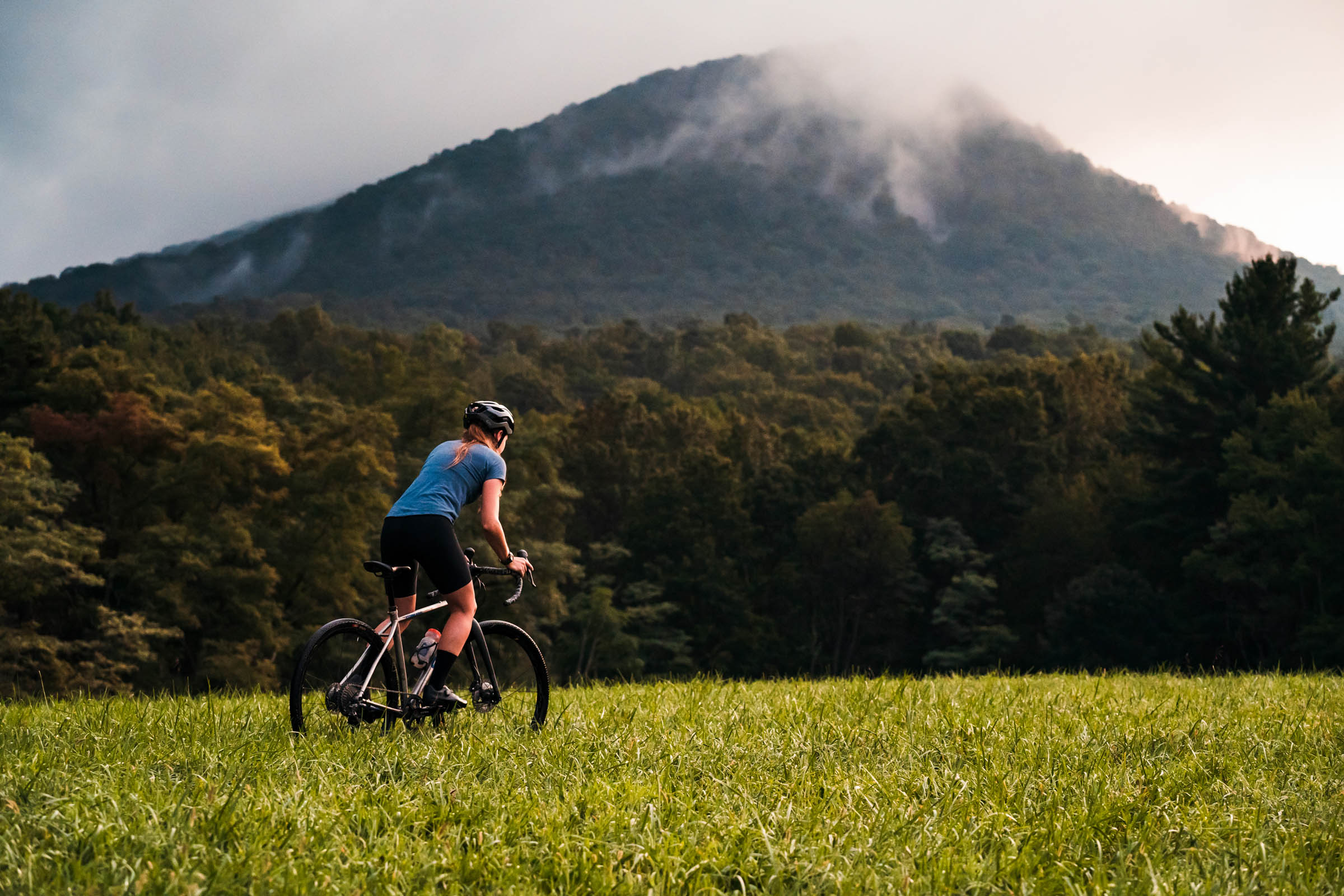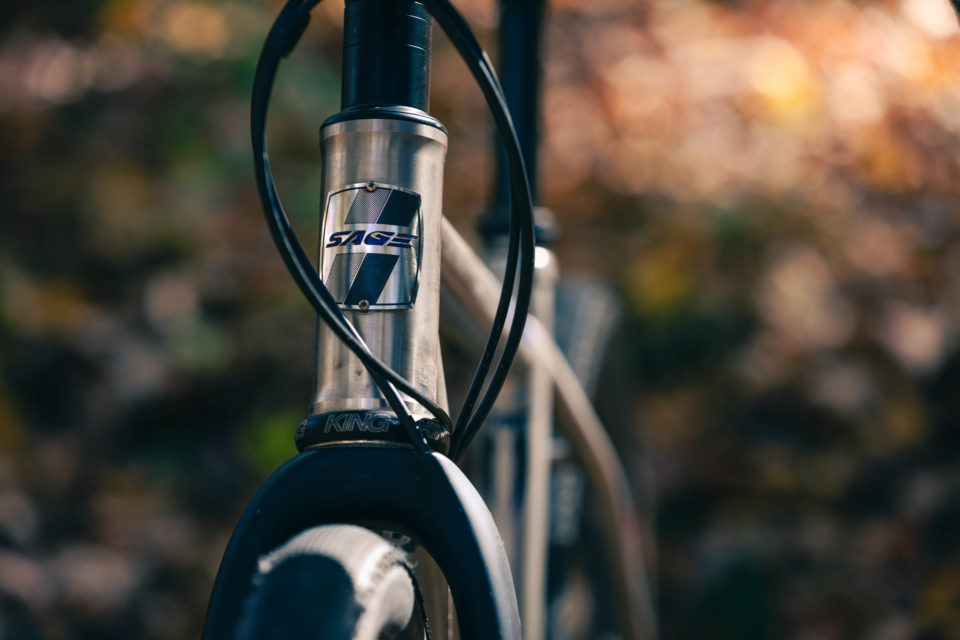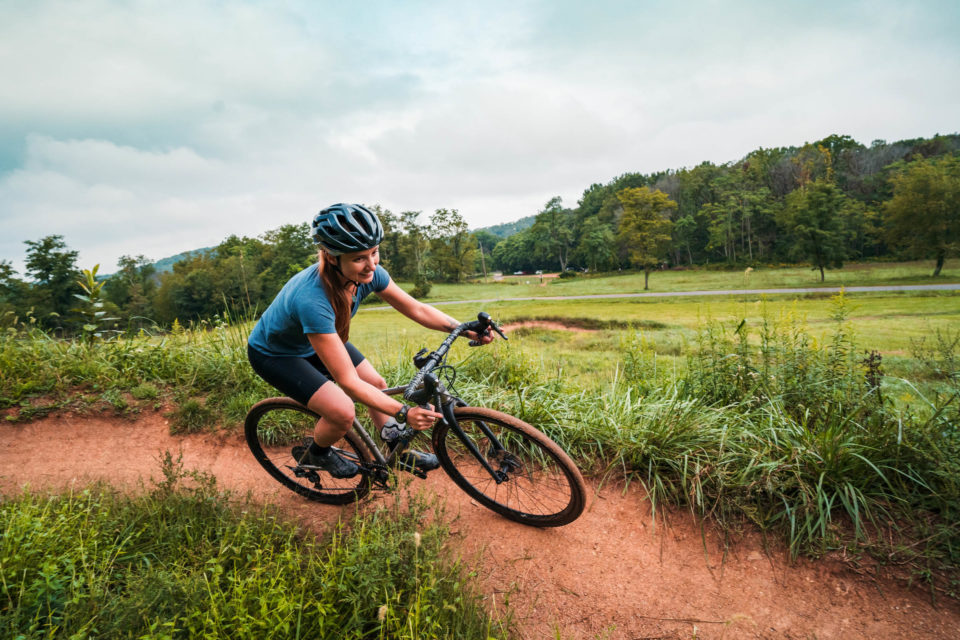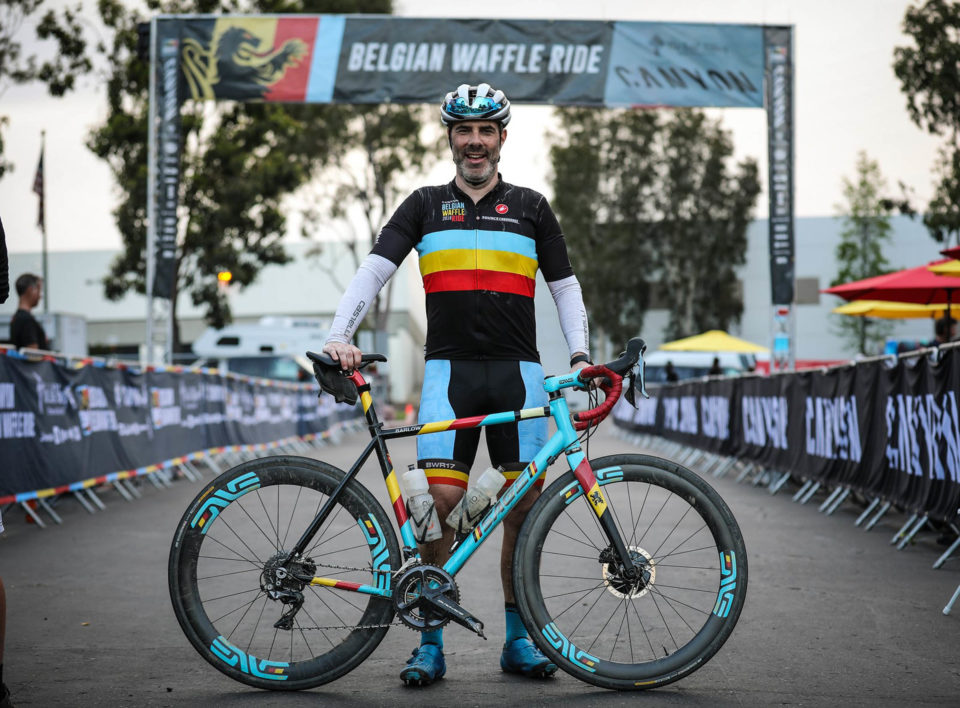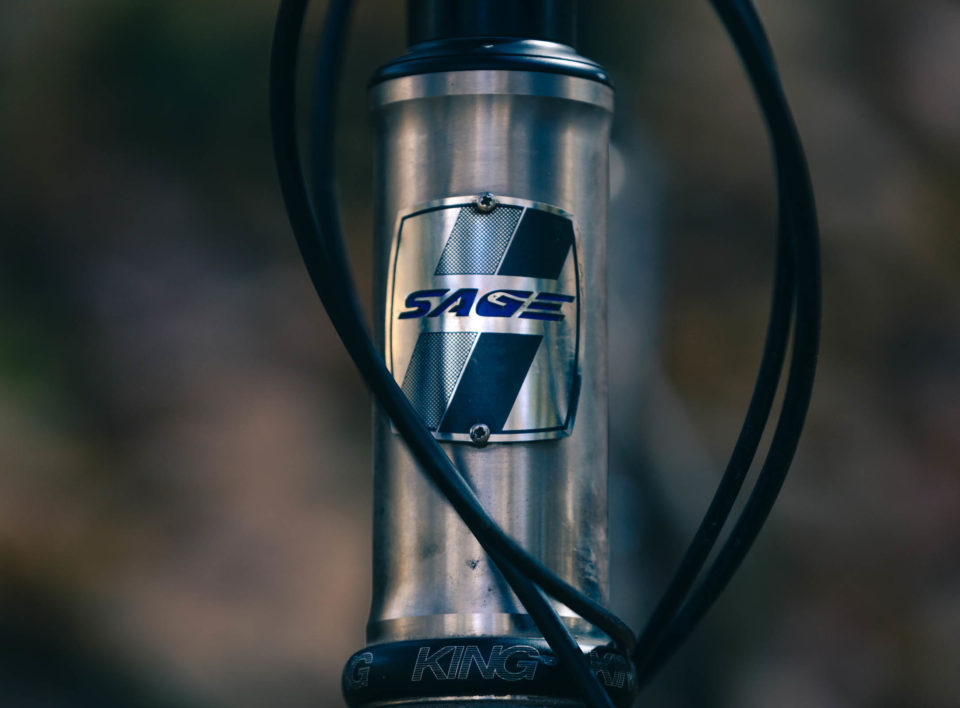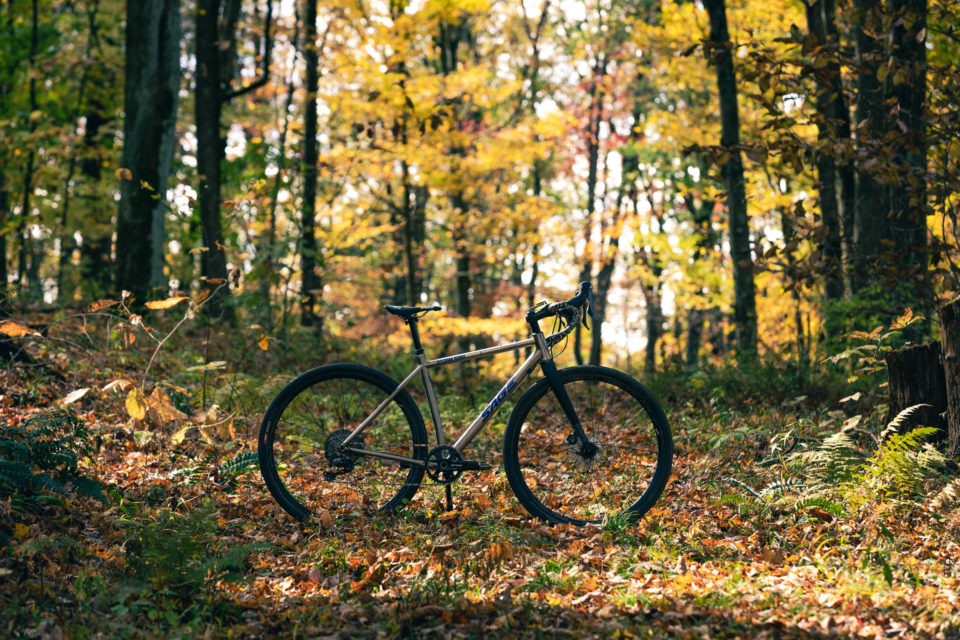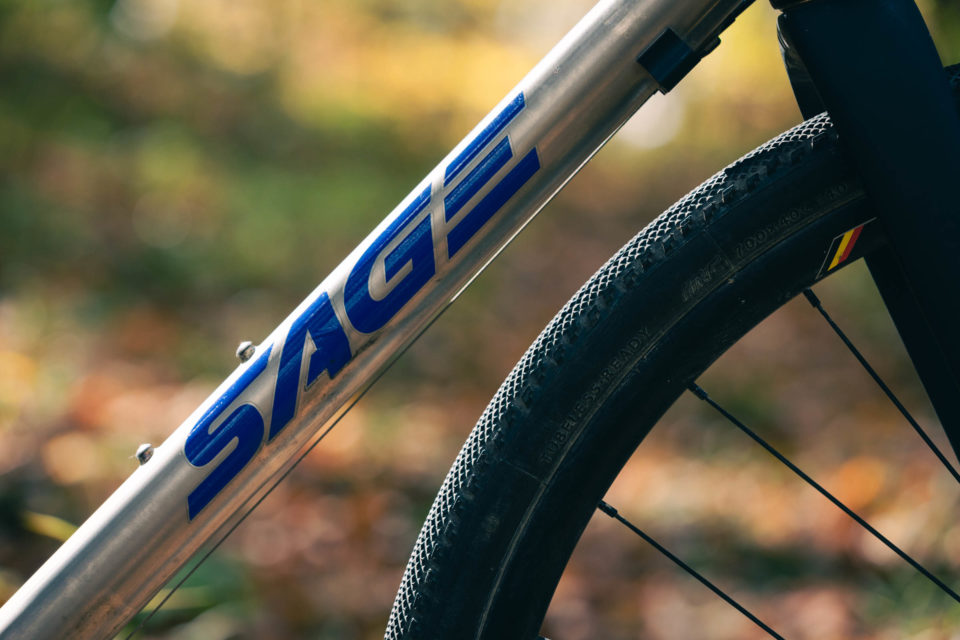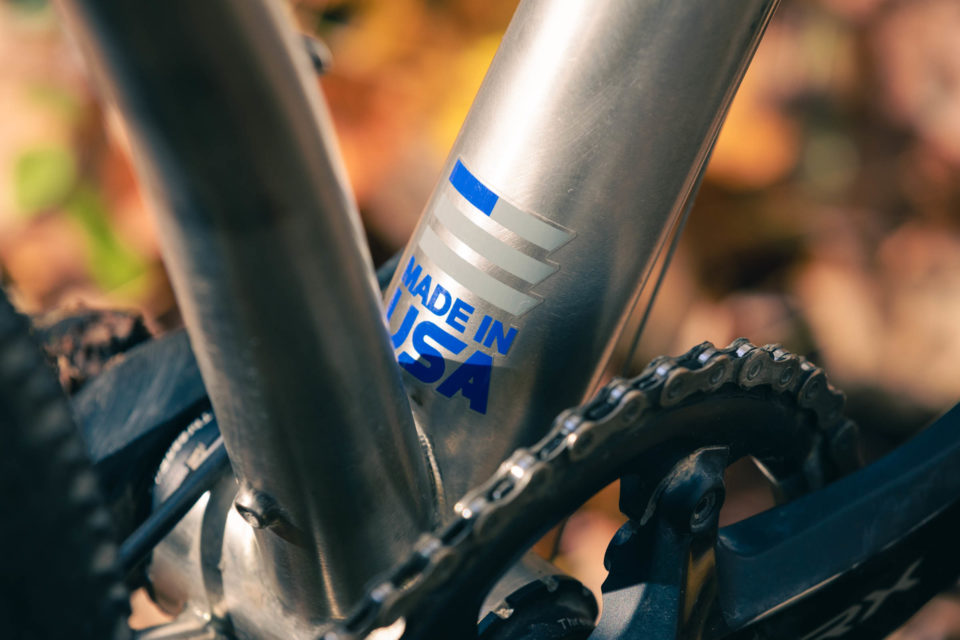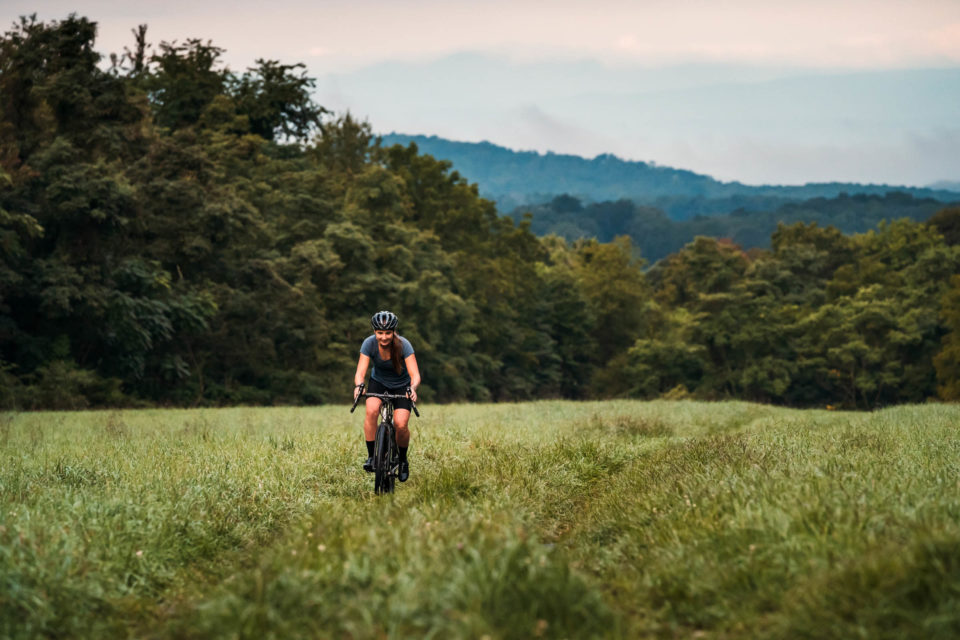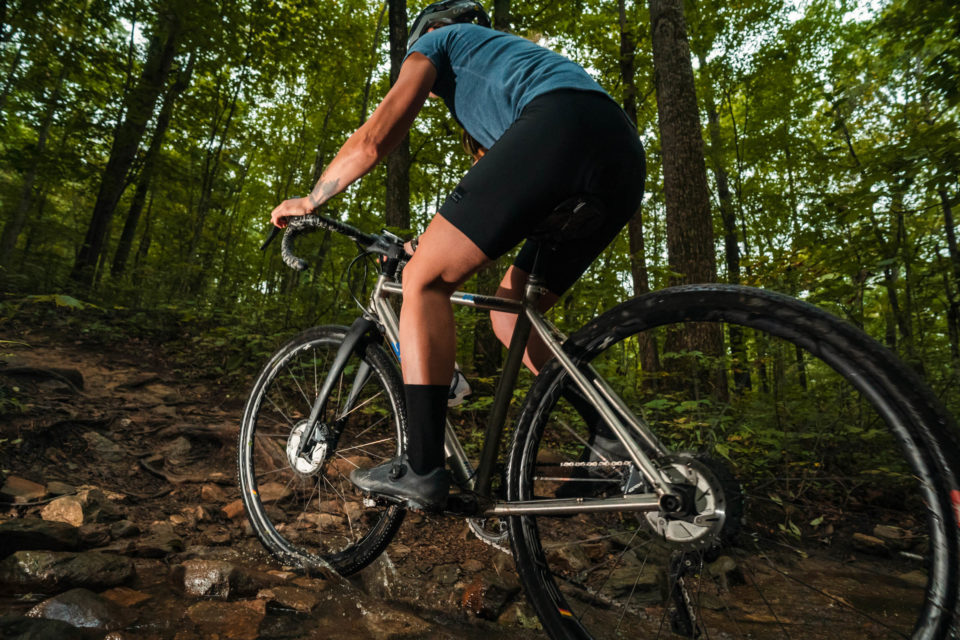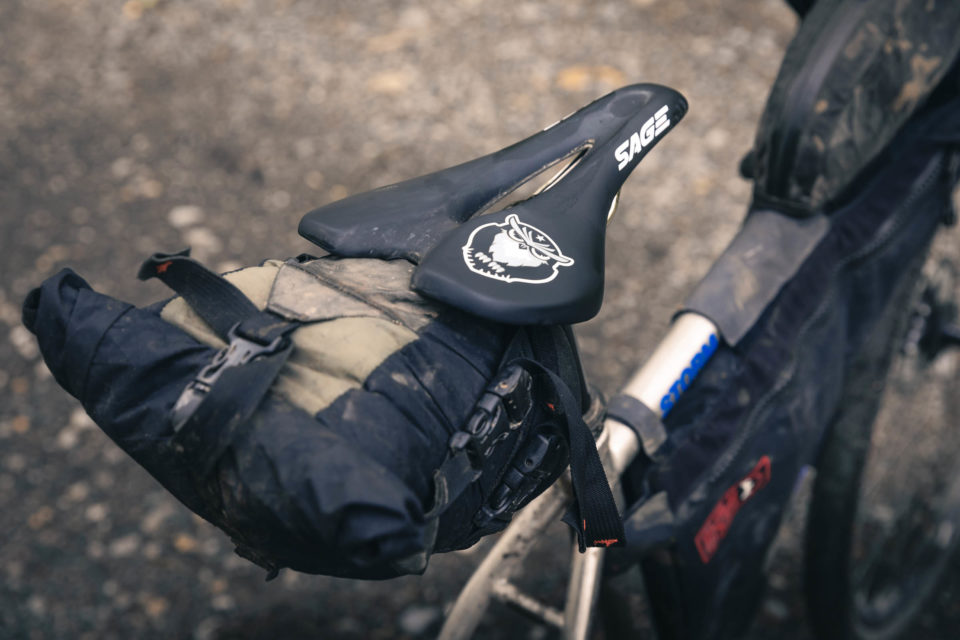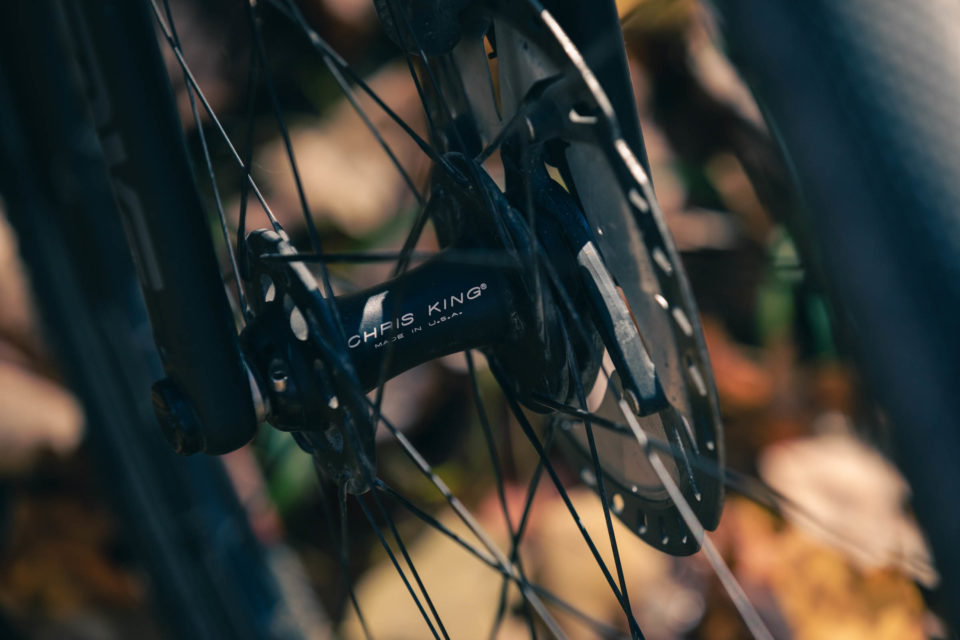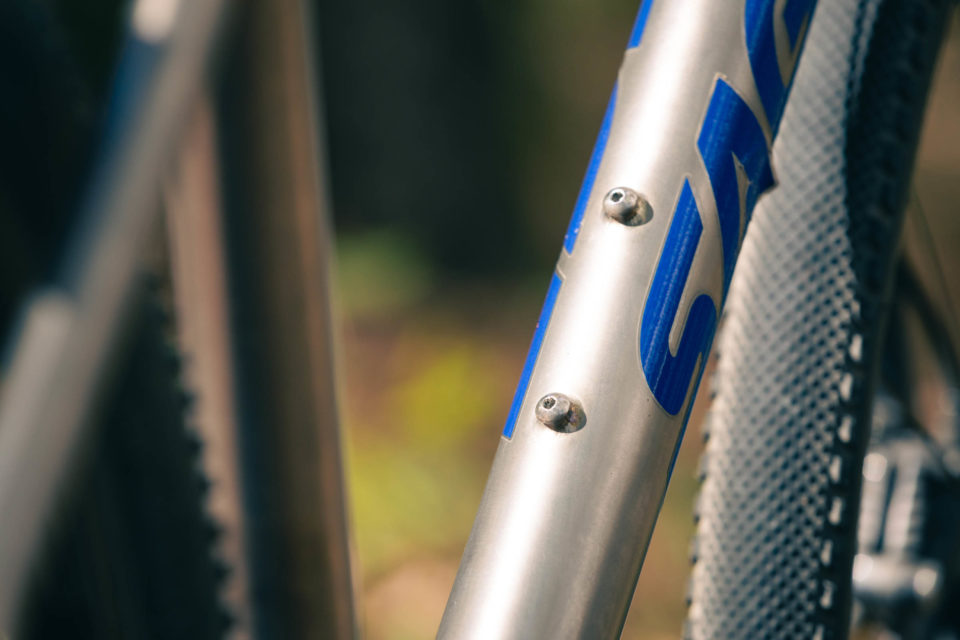Sage Storm King Review
Jess Daddio became “competition curious” last year and decided to hang up her steel rig and try out the fast-and-light Sage Storm King, a versatile titanium drop-bar machine that can clear 2.4″ tires. After putting well over 1,000 miles on it this summer, bikepacking, gravel grinding, and even trail riding, Jess reports back with a full review…
PUBLISHED Nov 24, 2020
Words and photos by Jess Daddio with additional on-bike photos by Andrew DeVier-Scott
Full disclosure: Prior to riding the Sage Storm King, I had never ridden a titanium bike. Usually, I’m bikepacking with a steel Salsa Fargo. It’s a hoss, but I love its versatility. I have used the Fargo for everything from touring the Great Divide Mountain Bike Route to sprinting the streets during my (brief) stint as a bicycle courier.
But in November 2019, I took that Fargo to Patagonia, Arizona, for the inaugural Spirit World 100, a 100-mile gravel race through southern Arizona’s borderlands. Being that the only gravel-worthy bike I had at the time was my Fargo, I was forced to embrace the “run what ya brung” ethos. I made some modifications to the Fargo and mentally steeled myself to toe the starting line with the heaviest overkill-of-a-gravel-race-bike ever. And, by all appearances, it was. After spending 10 hours in the saddle on rough, washboarded roads, I was grateful for the slack geometry of the Fargo, but as versatile as my beloved steel steed is, I was itching to try a lighter, more capable race bike that could also hold its own on a bikepacking trip.
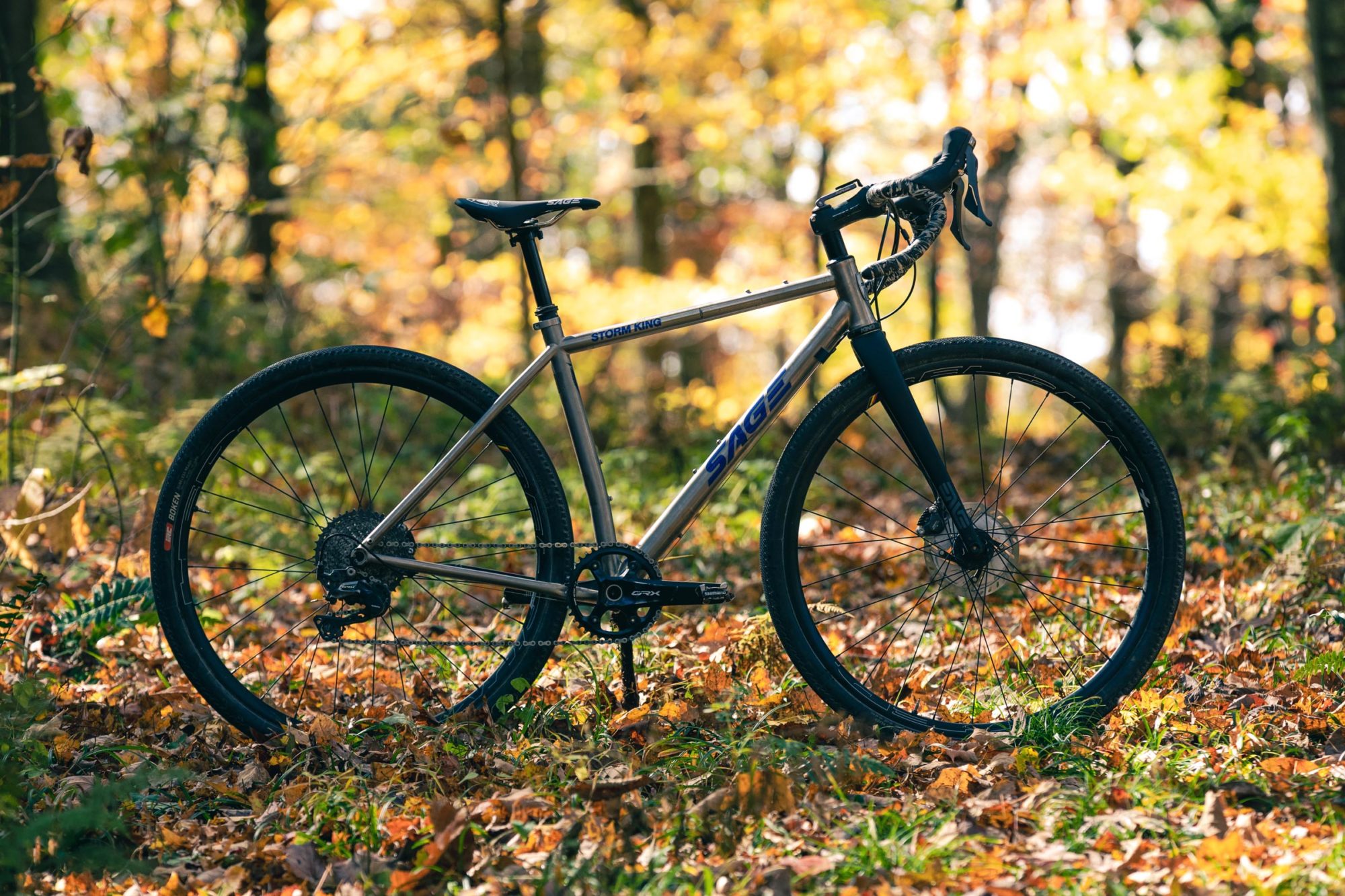
- Highlights
- Angles (50cm): 71.5° Head tube, 74.5° Seat tube
- Chainstay: 423mm
- Bottom Bracket: T47 Threaded / 71mm drop
- Hub specs: 12 x 100mm front / 12 x 142mm rear
- Seatpost Diameter: 31.6mm
- Max tire size: 700 × 50mm or 650 × 2.4”
- Price (frameset): $4,225 (w/ Enve Adv. Fork)
Not three weeks after I’d returned from Patagonia, Sage Bicycles announced its newest bike which looked, to me, like the answer to my “competition curious” musings: the Storm King. Touted as “a rock-gobbling animal,” the Storm King—named for the flowy Storm King Trail outside of Bend—is “not another gravel bike,” according to Sage. Capable of clearing 700 x 50mm or 650B × 2.4” tires, the Storm King might have been mistaken for another cross bike were it not for the extra tire clearance and bikepacking-friendly elements like front and rear rack mounts and bosses for bolt-on bags.
Based out of Beaverton, Oregon, Sage prides itself on customizing the bike to the rider, and the Storm King is the epitome of that commitment. The Storm King is available as a frame, frameset, or complete build, and can come equipped with a dropper post, a 1x or 2x electronic or mechanical drivetrain, and either the ENVE G-Series Fork or the newly released Adventure Series Fork. Though seven stock sizes are available (ranging from 50cm to 62cm), Sage will even finetune the geometry to help riders get the best fit and feel possible.
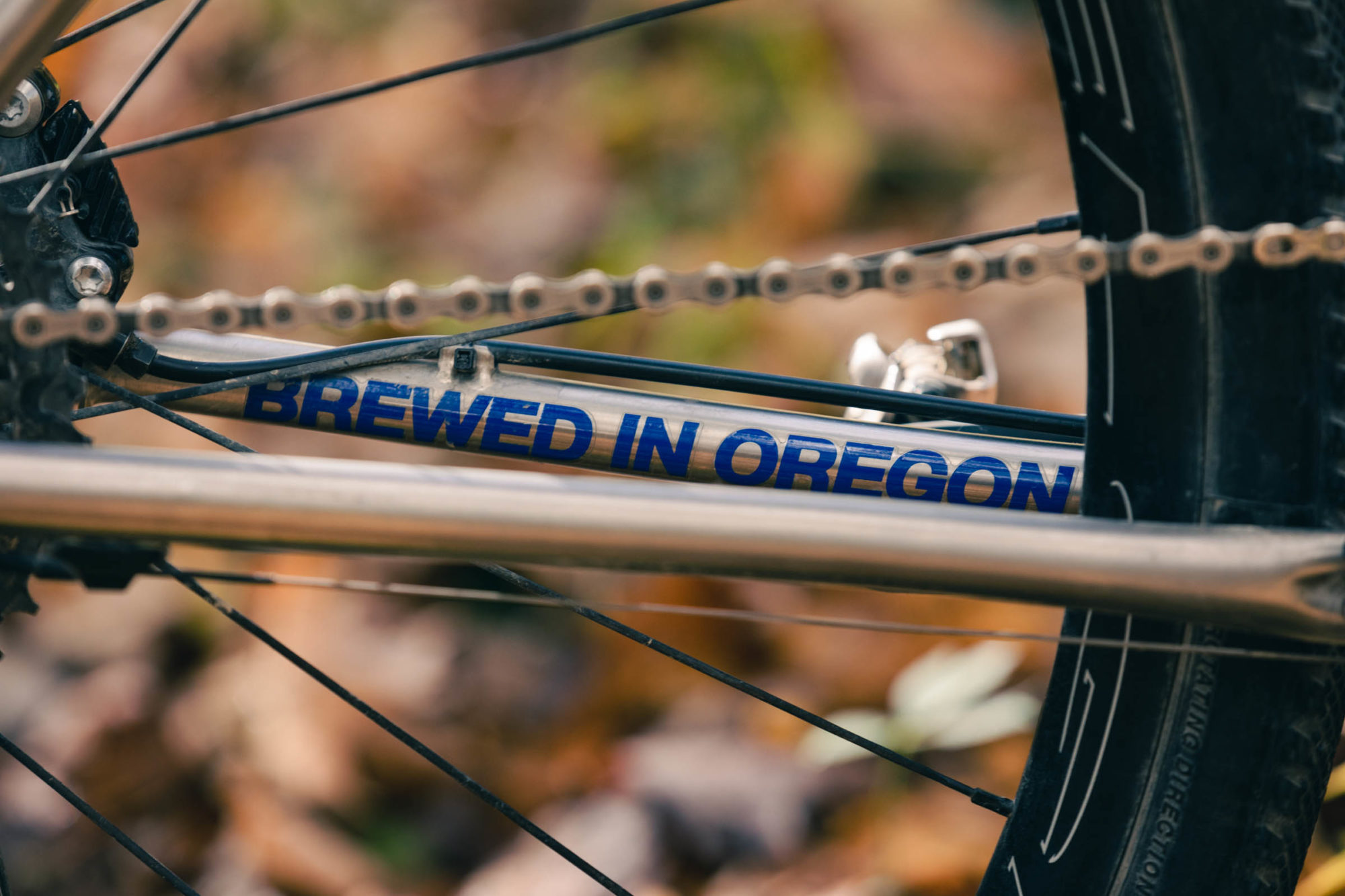
I live in Harrisonburg, Virginia—locally known as “Rocktown,” so this titanium “rock-gobbling, drop-bar beast” piqued my interest. My backyard trails in the George Washington National Forest err on the technical side and the same can be said of the Forest Service roads and doubletrack that weave through the forest. At times hard-packed and fast, at others, textbook chunky-chunk-chunk, “gravel” in Virginia can mean a lot of different things. Whether I’m heading out for a gravel century or a bikepacking trip, I wanted to know: is the Storm King really not just another gravel bike?
Four months later, just as the realities of COVID-19 were settling in, a beautiful 50cm Sage Storm King with a dropper post and a Shimano GRX RX810 1x drivetrain arrived on my doorstep. With all of my trips and races cancelled or postponed indefinitely, I wasted no time putting this bike to the test right here in my home state. Fortunately, Virginia has no shortage of diversity in terrain, so after riding the Storm King well over 1,000 miles this summer, I got a pretty good feel for how this bike performs on everything from buttery pavement to rowdy ATV trails.
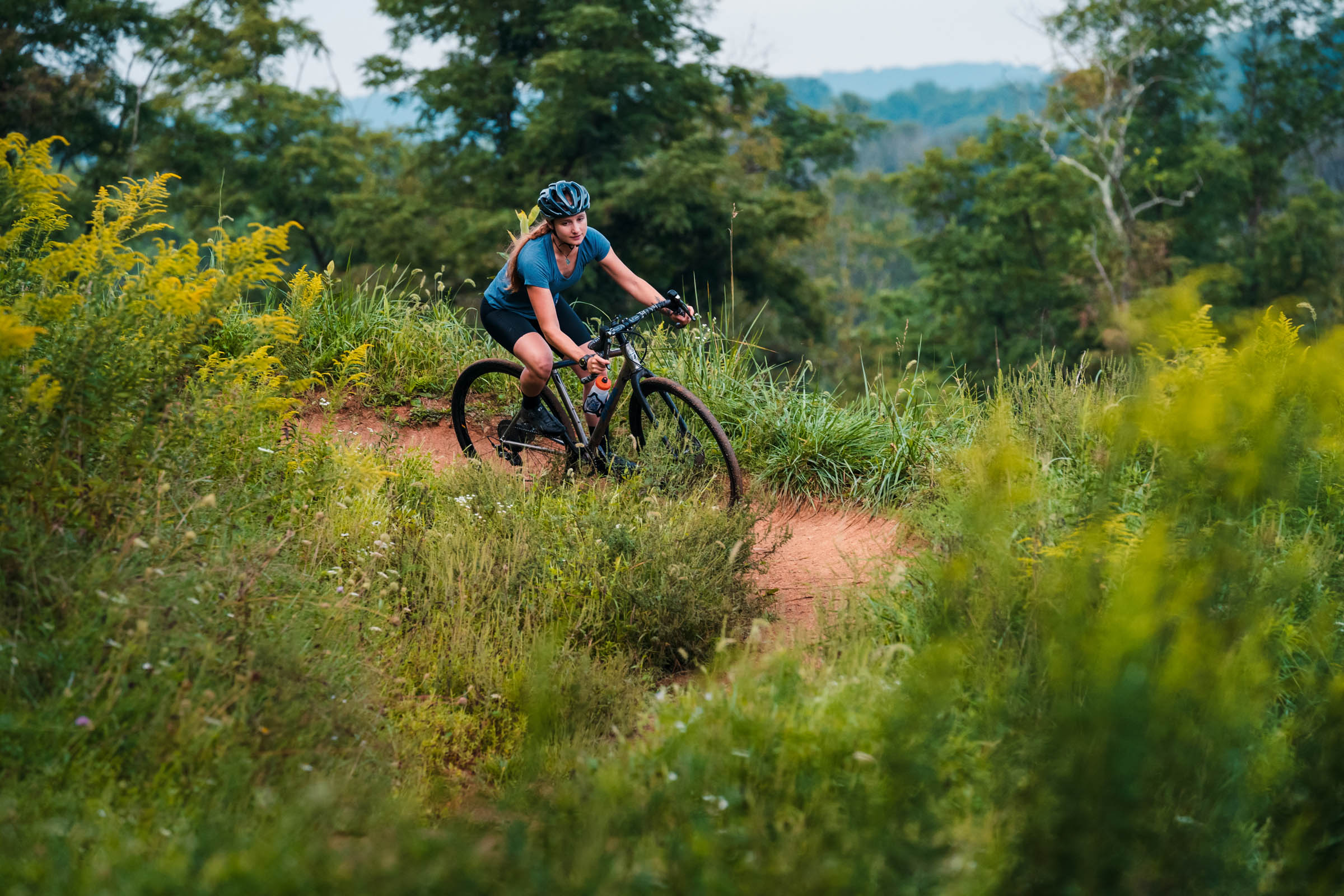
BEHIND THE BIKE
Before I share my take on the Storm King, I must first introduce you to the mastermind behind it: Dave Rosen. Born and raised in New York City, Rosen learned to love riding as a teenager during the mountain biking boom of the ‘80s and ‘90s. He raced up and down the Eastern Seaboard at every mountain biking race hub he could find, from Snowshoe in West Virginia to Mount Snow in Vermont. That penchant for dirt dominated until 2002 when Rosen moved to Oregon and joined his first road team. Throughout the early 2000s, Rosen worked as an analyst for Nike by day and raced road—and eventually cyclocross—by night. But then, the Recession hit in 2009. Rosen found himself suddenly unemployed, yes, but also unencumbered. Though one door had closed, Rosen used the opportunity to open another.
He dove headfirst into the bike industry. In 2012, Sage was born. Initially, Rosen wanted to create budget-oriented titanium bikes, but when it became clear that outsourcing the builds to China resulted in inconsistent frame quality, he shifted directions. Since 2014, Sage has built all of its titanium bikes right here in the U.S.
“I’ve always loved the idea of buying and owning a bike you’re gonna have for 20 years at least. Making a bike that’s still gonna look good and be relevant for that long, that was always important to me.” That, says Rosen, and making a bike that’s fast.
As a competitive cyclist, Rosen dedicated Sage’s first years to crafting premium titanium race bikes. His first models—the Skyline and PDXCX—were the products of his road and cross racing experiences in Oregon. As the cross scene grew and evolved, so, too, did Sage’s direction. In 2016, the company released its first official gravel bike, the Barlow, which clears 40mm tires and 53/39 chain rings. The Barlow took a number of riders to the podium at prestigious gravel events such as the Belgium Waffle Ride and SBT GRVL. No doubt the Barlow could haul ass, but when it came to all-day comfort and tire clearance, Sage had a gap in its lineup.
Enter the Storm King.
STORM KING VS. BARLOW
Though I’ve personally only ridden the Storm King, Rosen says that, when it comes to riding long distances over a variety of terrain, the Storm King is more stable and more comfortable than the Barlow. Where the Barlow exceeds on road but can handle the dirt, the Storm King was built for the dirt, but can keep up on road.
The head tube angle on the Storm King is subtly slacker with 71.5° on my 50cm build versus 72° on the Barlow equivalent. The Storm King also has a longer wheelbase than the Barlow, 101.4cm versus 99cm. The reach between the two, however, is practically the same—38.4cm on the Storm King versus 37.6cm on the Barlow—and that, says Rosen, helps keep the overall Sage fit consistent (though he adds that the geometry can be tweaked depending on the rider’s wants).
Both bikes come equipped with Sage’s own Beccus saddle as well as fender and rack mounts for touring, and the the T47 bottom bracket—which allows for maximum tire clearance and easy bottom bracket installation, removal, and maintenance. Both the rear brake line and dropper post cable are internally routed on the Storm King which, combined with the raw industrial finish, give the bike a sharp, clean aesthetic. The Storm King’s curved seat tube and short chainstays are what give riders the flexibility to run up to 650B x 2.4” tires (though I only tested the bike with the 700c x 40mm IRC Boken tires that came with the build).
RIDING FAST AND LIGHT WITH THE STORM KING
For over 1,000 miles this summer, I exclusively rode the Storm King. Rides varied from two-hour road rides to multi-day all-terrain adventures. On largely pavement rides, I had no problem keeping up with the peloton, even when my legs were shot. The GRX 40T chainring paired with the 11-40 cassette was a natural fit for the road, but when I took the Storm King to the jeep trails and started crawling up the mountains here, I found myself walking pitches I normally could have mashed out on the Fargo’s 34 x 11-42 gearing. Of course, that’s hardly a complaint, given the customizable drivetrain options Sage provides.
On the handling front, the Storm King proved more than adept at maneuvering even the chunkiest climbs and descents. The addition of the dropper post allowed me to get the seat out of the way just enough so that I could clean technical sections of singletrack. I imagine I might have felt even more stable on trail with a wider set of 650B tires, but I don’t mind getting sporty with the 40s for short stretches of singletrack, especially if the route I’m riding is predominantly gravel.
While still racey in body position, the Storm King felt surprisingly comfortable during long days on the bike. This is no doubt a result of Rosen’s thoughtful design combined with quality gravel-specific components. The 42cm carbon flared ENVE G Series Gravel Handlebar has quickly become my new favorite drop bar. The combination of these bars with the slightly less aggressive riding position of the Storm King were, to me, the ultimate pairing of comfort and efficiency. After a particularly grueling gravel century with close to 10,000 feet of climbing, my hands, neck, and lower back were less fatigued than they were after similar rides on a Cannondale Topstone, for example.
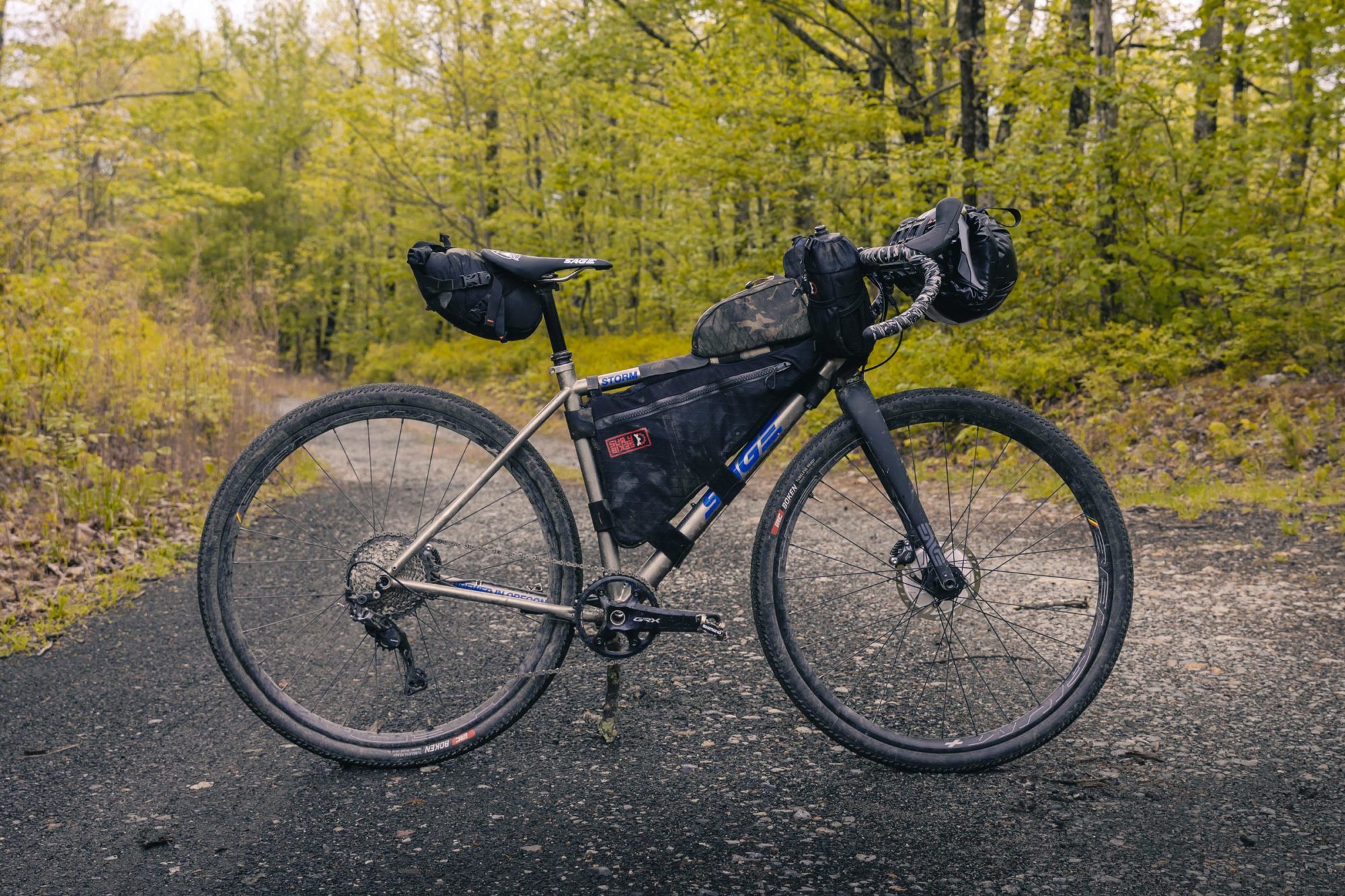
On numerous weekends, I loaded up the Storm King with bags for a quick overnighter into the national forest near Harrisonburg. On a 50cm build, space is pretty tight—more often than not I wore a pack to carry water—but I was still able to fit the full frame bag I use on my Fargo thanks to the Storm King’s taller head tubes. My biggest bikepacking trip on the Storm King was a three-day, two-night, 260-mile gravel bikepacking trip along the RockStar route in Virginia. I rode an average of 85 miles a day, climbing anywhere from 7,200 to 9,700 feet each day. The route mostly follows gravel roads, but there’s a hefty mix of rocky doubletrack as well as flowy singletrack and punchy pavement thrown in for good measure.
This style of all-terrain adventure, be it an overnighter or a big day, is the Storm King’s sweet spot. When I needed precise, responsive handling on doubletrack littered with baby heads, the Storm King provided. When I had to sprint a mile of pavement to escape a (seemingly vicious) dog, the Storm King lived up to Sage’s racey reputation. And when I wanted the stability to shred singletrack on RockStar, it was playful and fun.
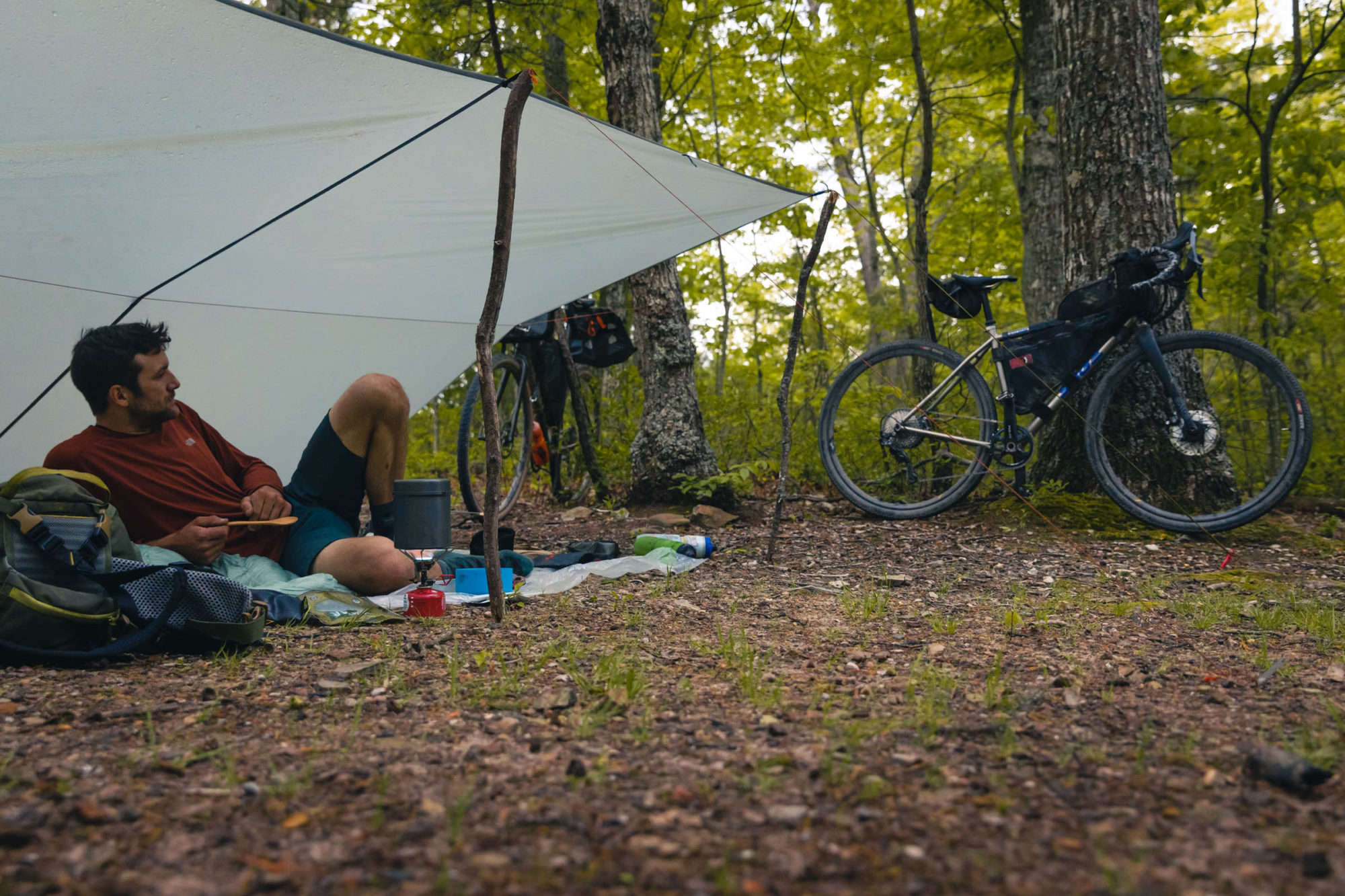
FINAL THOUGHTS
Like most titanium bikes, the Storm King falls well on the pricer end of the spectrum. My build came in at a cool $8,429 and Storm King frames alone start around $3,800. But you pay for what you get. Decked out in top-of-the-line componentry from Chris King and ENVE, this Storm King unsurprisingly rides like a dream. Zippy when you have a need for speed, balanced when you’re shredding trail, the Storm King can tackle it all.
- Frame: Sage Stormn King (50cm)
- Fork: ENVE G-Series Gravel Fork, 50mm rake
- Headset: Chris King i7 – Matte Jet
- Headset Spacers: Chris King Spacer Kit – Matte Jet
- Stem: Enve Stem – Carbon – 90mm – 6°
- Handlebar: Enve Gravel Bar – Carbon – 42cm – Flared
- Bar Tape: Lizard Skins DSP – 2.5mm – Black
- Seatpost: Fox Transfer FActory Post – 100mm, 31.6mm + Remote Lever
- Saddle: Beccus saddle – 143mm
- Shifters: GRX RX810 Hydro w/ Caliper (Dropper 1X)
- Rear Derailleur: GRX RD-RX812 (1X)
- Rotors – Front: SM-RT800 – Centerlock – 160mm + Adapter
- Rotors – Rear: SM-RT800 – Centerlock – 140mm
- Chain: Shimano HG701-11
- Cranks: GRX RX810-1 – 170MM – 40T
- Bottom Bracket: Chris King T47 24mm X
- Cassette: XT-M800 (For GRX) – 11-40 – Medium Cage
- Wheels: HED Belgium Plus Disc – Chris King R45D 28/28
- Tires: IRC Boken Tubeless – 700×40
- Accessories: Shimano Pro Dropper Lever Toggle Switch
The Storm King predictably performed best as an all-day gravel grinder. I would have been really curious to race it at the 2020 Spirit World 100 to compare my ride with 2019’s. As a bikepacking rig, I found the Storm King to be a pretty solid bike for the all-terrain style of routes I ride most often—that is, mostly gravel roads or non-technical doubletrack with snippets of singletrack and pavement. Were I to ride a more technical or singletrack-heavy route, I would definitely feel more comfortable on a drop bar mountain bike like my Fargo. Admittedly, I did not test the Storm King on 650B x 2.4″ tires, so I can’t speak to the added stability of throwing on wider rubber.
It wouldn’t take much for me to max out carrying capacity with the 50cm build, especially if I was bikepacking in cooler/inclement weather and needed to carry warmer gear. Such is the bane of small riders (I’m 5’4” for reference). For vertically challenged riders or those wanting to use the Storm King more seriously for bikepacking, ENVE’s Adventure Fork would be clutch for increasing storage capacity. You could also go the rack and pannier route, but I’m not currently set up for that style of touring.
My only real complaint about the Storm King is the Sage Beccus saddle. As a female rider, it was pretty uncomfortable. I tried it on a few four-hour rides, but felt like it was negatively affecting my ability to experience the Storm King, so I swapped it out with an Ergon Women’s SR Sport Gel saddle for the remainder of the review period. I also found it surprising that the Sage decals started peeling off after only a few rides. For such a high-end product, and given Rosen’s intricate attention to detail, I’d think the decals should have a higher quality, too.
- Model Tested Sage Stormn King (50cm)
- Place of Manufacture Oregon, USA
- Price $3,800 (frame) / $8,429 (as tested)
- Manufacturer’s Details SageTitanium.com
Pros
- Clearance for big tires up to 650B x 2.4”
- Custom builds available
- Ample mounts for water bottles, racks, and optional fork mounts with the ENVE Adventure Fork
- All of the weight-to-strength benefits you’d expect of a titanium bike
Cons
- Uncomfortable saddle, which is a personal preference
- Sage decals began peeling after only a few rides
- High price tag if you’re “competition curious”; I imagine only serious endurance racers who like to occasionally tour will buy this bike
Wrap Up
After 1,000 miles, the Storm King very naturally became my do-it-all-bike. At present, it would be hard to replace my Fargo with the Storm King. If I could throw 29 x 2.2″ tires on the Storm King, I’d have my dream bike. With that added tire clearance, I could very easily reduce my garage full of bikes down to two—the Storm King and a full-suspension mountain bike like my Juliana Furtado—and feel adequately prepared to head out on almost any ride. That being said, I absolutely love the Storm King as is. It fits me—and my riding style—like a glove, and is a treat to ride on big days in the saddle. Specs aside, I especially love its unpolished aesthetic, and that a Scotch-Brite pad can bring the industrial finish back to life (for bikepackers, bag rubbage is real).
Could I see myself keeping the Storm King for 20 years? Does the Pope shit in the woods? Would I take the Storm King on a route like the Great Divide? On the build I currently have, probably not. I could see how tinkering with the geometry to make a more upright riding position, adding the Adventure Fork, and swapping out the drivetrain and tires might change my mind. And according to Rosen, that’s what most Sage customers do. They tinker. He says about 65% of the Storm King orders he’s working on are custom builds, including one for a cyclist who’s planning to ride the Tour Divide.
“We’re pushing the headtube angle back more and increasing the trail number so it will be more friendly for him,” says Rosen, “but is it a Storm King anymore? I don’t know, but that’s the beauty of it. It’s what you want the bike to be. Exploring is in the Sage DNA, and I think the Storm King gives people the versatility to get out there.”
In summary, if you’re a competitive (or, like me, “competition curious”) cyclist who likes to race and tour long-distance, mostly gravel routes, the Storm King could very well be your do-it-all-bike. Just start saving now.
Please keep the conversation civil, constructive, and inclusive, or your comment will be removed.







